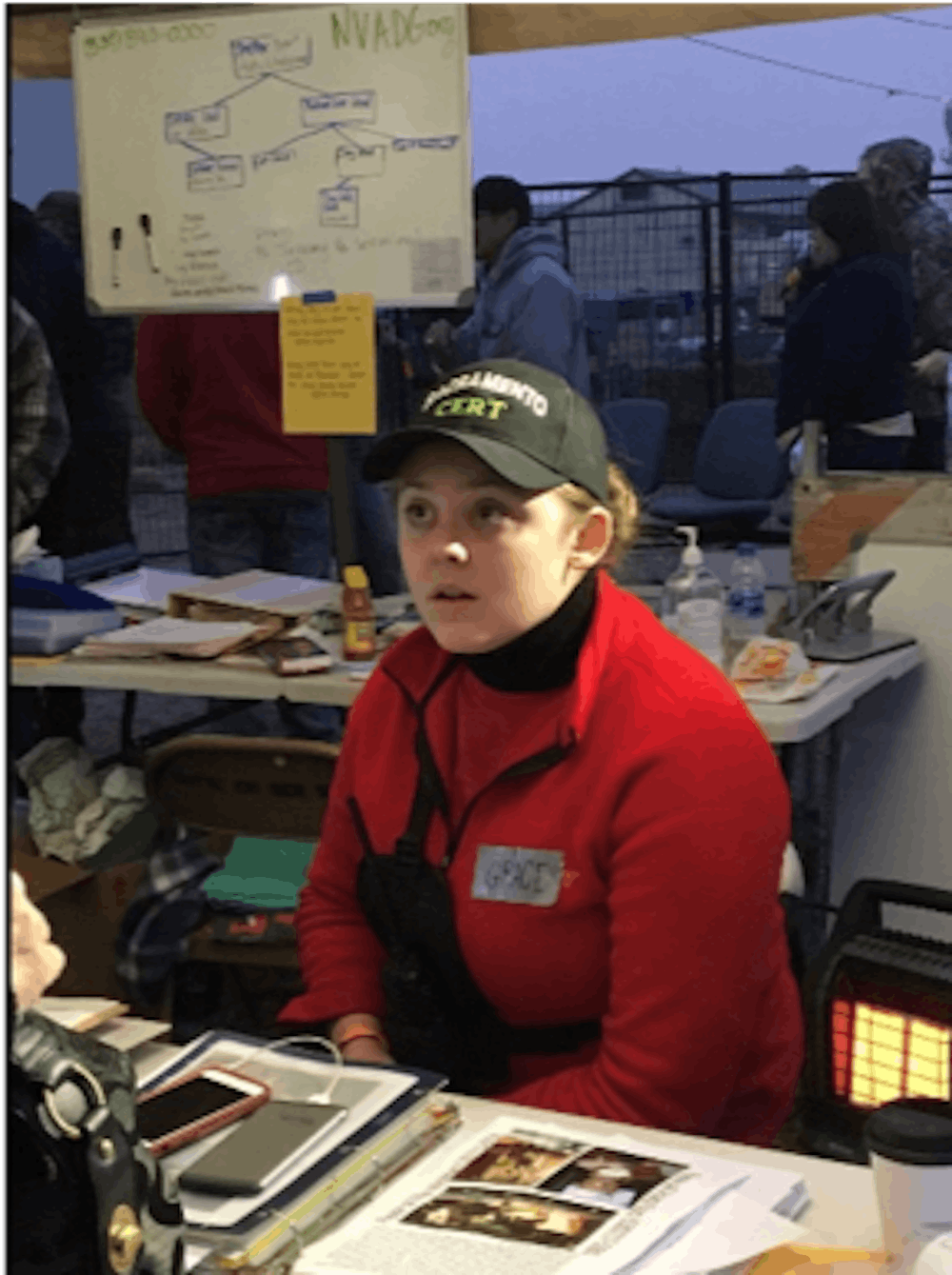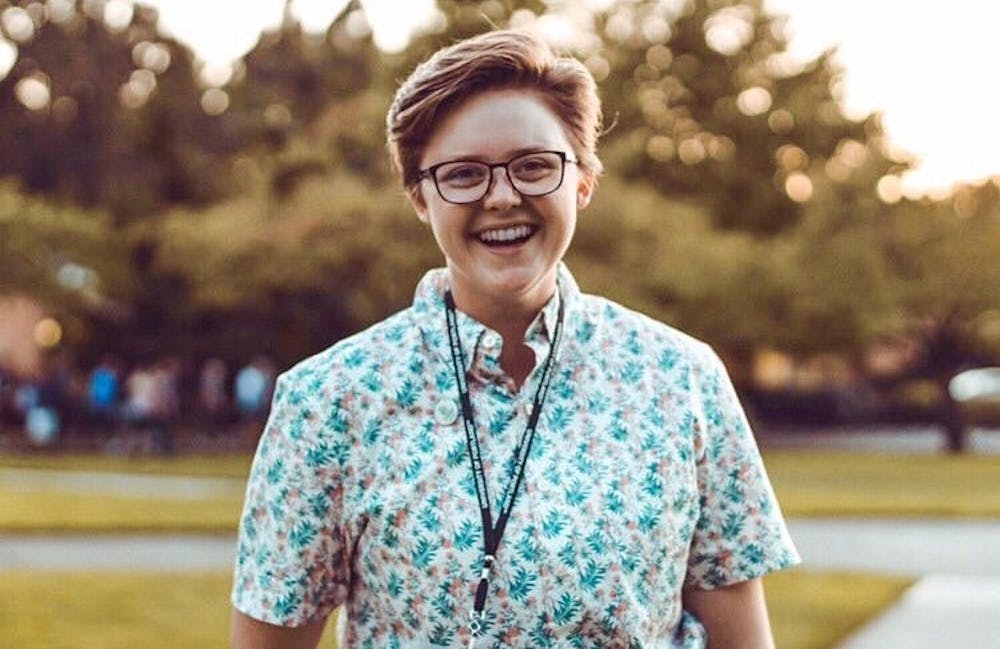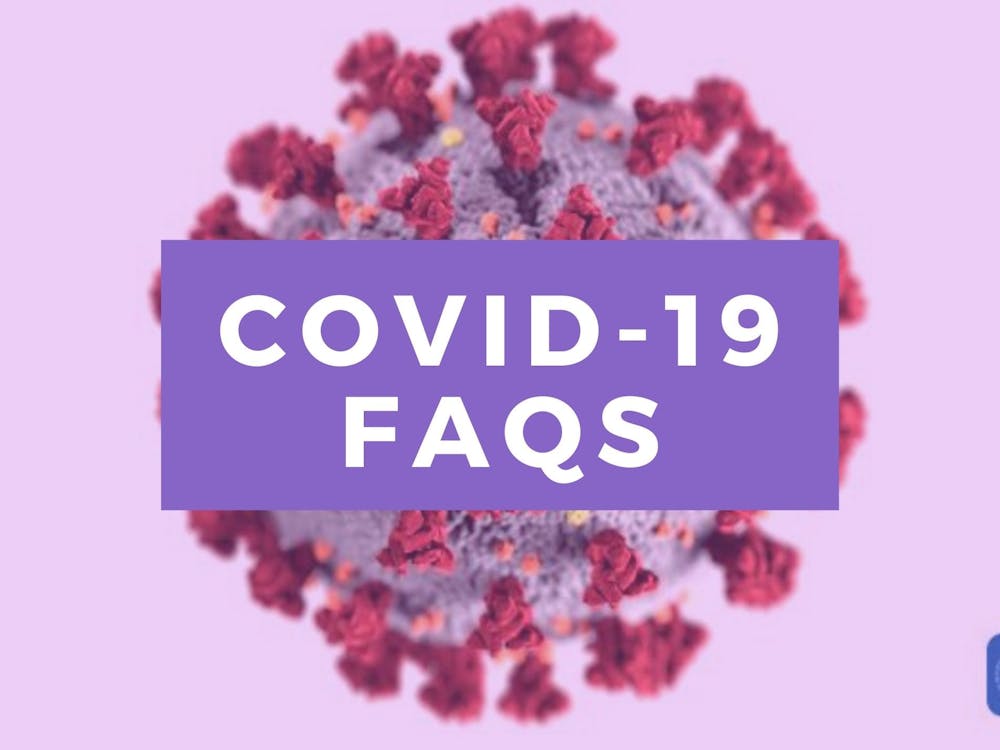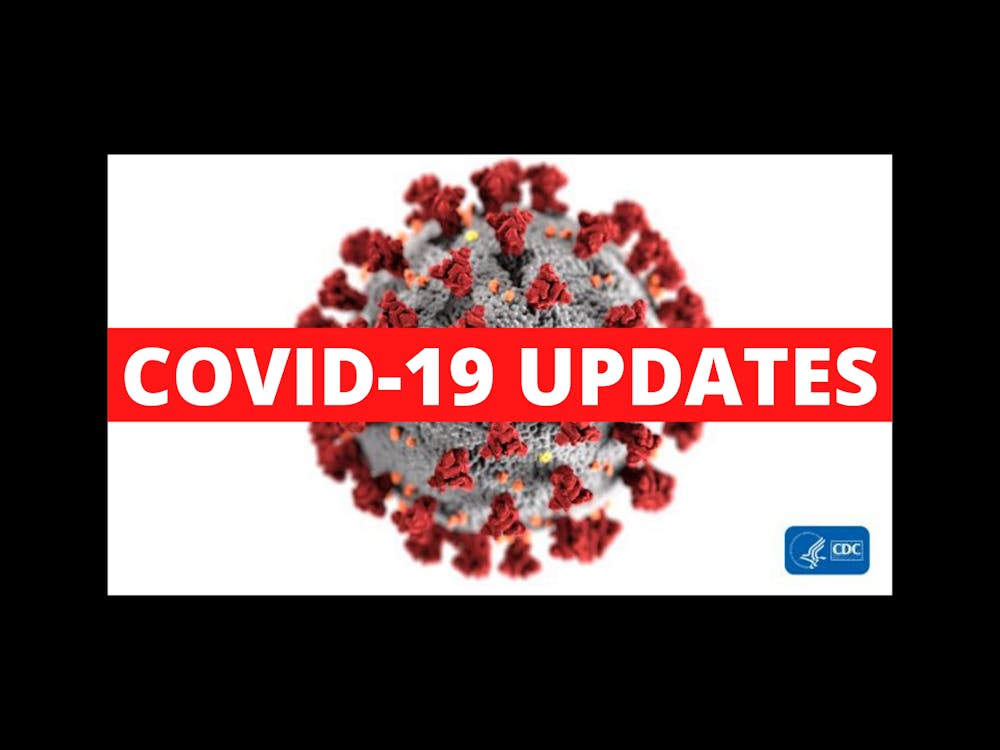Freshman nursing major Harris Harris woke up last Friday at their house in Folsom, California, ready to take on another day of online classes. They were looking at their phone when they saw the notification that would cancel any other plans for the day. They grabbed their packed bag and left the house, and before long they arrived at their destination for the day: a drive-through coronavirus testing facility.
Throughout the day, Harris helped screen patients who were there to get tested for the coronavirus. Harris, along with other workers, greeted cars and gathered vital information to ensure patients had proper documentation to get tested.
Communicating mainly by shouting through closed car windows, Harris’ voice grew hoarse throughout the day. The work was tedious, with the facility running at a rate of roughly one patient every two minutes, according to Harris.
This has become a normal day for Harris, who has been spending their days off from school volunteering at the makeshift testing center, through the Sacramento Fire Department, where Harris has served on the volunteer response team for three years.
“So, this came up, and my phone went off, and they said, ‘hey, I want you to show up’, and so I packed up my bag and took off,” Harris said. “They’ve asked that I come back whenever I possibly can, so I’m basically just doing my school work as fast as I possibly can so I can go and spend as many days working full day shifts.”
Harris works alongside other volunteers, nurses and other workers to keep the makeshift facility running in a safe manner, which includes informing patients of the process and constantly communicating with other workers to ensure those providing the tests have time to change protective equipment between patients. Harris described the drive-through facility as a tense environment with no room for error.

Harris has volunteered with the Sacramento Fire Department for three years. Photo courtesy of Harris Harris.
“Security is really tight because we have to make sure that people aren’t just showing up trying to get tested,” Harris said. “The location of the whole operation isn’t released to anybody until their doctor prescribes a test, at which point they have to be experiencing a ton of COVID symptoms and have to look like they have it. So, that’s why we have to be really careful with our patients, because everybody has all the symptoms, and everybody’s coughing like crazy.”
Although the work is dangerous and far from easy, Harris is grateful for the chance to help others. As a steroid-dependent asthmatic, they are at a higher risk of contracting the virus, which means taking extra precautions both on and off work. Harris is aware of the risks in this field, and after nursing school hopes to work as an emergency life flight nurse, a similarly dangerous line of work.
“I really feel like it’s my calling in life to put myself out there and do these kinds of things,” Harris said. “The danger involved is just going to be part of my life, I’m just going to be putting myself out there to try and save lives.”
Harris has been deployed several times in the last three years through the volunteer response program, but this pandemic has brought its own personal challenges. In their time working at the facility, Harris has screened multiple people they went to elementary school with.
“It’s a really scary job to sign up for, and I’m doing it as a volunteer, I’m not getting paid to go out there and risk exposure,” Harris said. “I’m just doing it because I’m a nursing student and it’s my passion in life.”
Patients getting tested stay in their cars throughout the process. Once they pass the screening at Harris’ station, they enter what is referred to as the “hot zone,” where cars open and nasal swab tests are administered. The hot zone is the only part of the facility where workers are wearing full-body protective equipment. Workers at every step of the process are aware of the dangers they are surrounded by.
“If you are ever caught walking within six feet of any other health care worker, you will be yelled at,” Harris said. “You basically just have to assume that everybody has it while you’re there. Everywhere that we go, we stay super far apart, and there aren’t enough masks for everyone to wear them all the time.
The facility administers over 200 tests a day, according to Harris. They believe that their capacity could be higher, but their limiting factor is the labs that provide test results. However, Harris believes that this number will soon have to rise.

Harris says it's their calling in life to do what they can to help save lives. Photo courtesy of Harris Harris.
“We will likely have to get faster, especially if lab capabilities increase, then it will be up to us to swab more people and do it while maintaining all the right safety regulations,” Harris said. “It’s scary, but I’m super proud of my team for everything that they're pulling off and the number of people that we’re able to help.”
Harris first got involved with the Sacramento Fire Department in a civilian emergency response procedure training program, which offers training in emergency procedures including firefighting, emergency medical response and swift water rescue. Three years later, Harris is now a trainer for the program.
Harris advises fellow Pilots and community members to practice social distancing and to avoid leaving their houses unless necessary. Lastly, Harris urges everyone to treat this pandemic with complete seriousness.
“Stay at home. This is not a small deal, take it seriously,” Harris said. “This is a super big deal to those who have underlying health conditions, which is a huge percentage of the population of the US. We all know somebody who definitely can’t afford to get COVID-19, and we are members of a population that is at some of the lowest risk, and so we’re also the ones who can help the most.”
Carlos Fuentes is a reporter for The Beacon. He can be reached at fuentes22@up.edu.








